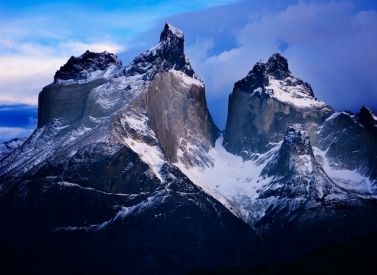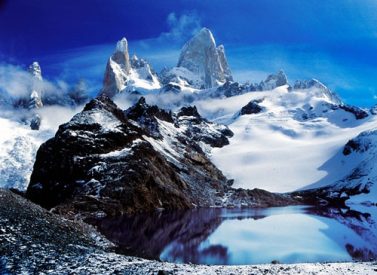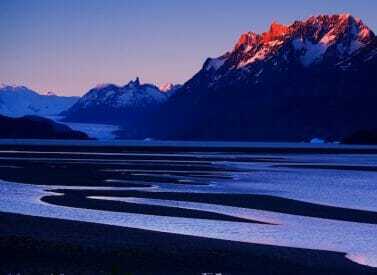
Winter Tour in Argentina, Patagonia
Spectacular winter trip to Argentine Patagonia.
Journey to Patagonia in winter and will be visiting this beautiful spectacular land in the quietest, least visited season.
Enjoy clear days, with thick snow, frozen waterfalls and special winter light giving Fitz Roy and Chalten a completely different feel to summer.
Days out are spent exploring the dramatically beautiful sites, while the cold winter evenings are spent with a warm drink, by cosy log fires at the lodges.
The tour takes you to Los Glaciares National Park where the spectacular granite spires of Fitz Roy & Cerro Torre tower above the horizon.
More on visiting Argentinian Patagonia in winter
We hike or snowshoe along the trails, depending on snow conditions, to reach the main viewpoints of this stunning area.
After visiting the Perito Moreno glacier, you can choose to head off for another or extend your stay with a trip to the legendary Tierra del Fuego and Ushuaia – city at the End of the World.
It is possible to extend your time in Ushuaia, from 4 to 5 days, to allow for more winter walks and Nordic skiing, or to head across to Paine in Chile.
Trip Highlights
Print Share Download as PDF-
Visit Patagonia in its sparkling winter.
-
Crisp day walks with trails almost to yourselves.
-
Cosy fires at night time in comfy lodgings.
-
Avoid the crowds and see Patagonia at its magical best.
The whole trip was extremely well-organised and delivered from both the UK and South American sides.
V. Brown
Full Itinerary
Day 1: Arrive El Calafate, transfer in to hostal/hotel
We meet you at El Calafate Airport and from there you are transferred to El Calafate.
At 19.00, you meet up with the rest of your group and the guide for a briefing meeting.
El Calafate is a small town of some four thousand inhabitants, El Calafate was for several decades a tiny staging post for the wagons transporting wool between remote estancias (sheep stations) and the coast. It lies near the shore of the vast, turquoise lake Argentino and is today a gateway to the natural wonders of the Los Glaciares national park.
Note: Accommodation options – hostel with shared bathroom, or upgrade to double room or single room with private facilities.
Day 2: Bus El Calafate-El Chalten, transfer to hostal/hotel (B)
After breakfast we travel by bus to El Chalten, a small remote mountain town close to the Fitzroy peaks.
We travel along 220km/137 miles of gravel road through the Patagonia steppe with a short stop at La Leona (if open), a picturesque inn, where you can enjoy homemade cakes – highly recommended is the lemon meringue pie!
From here, the views of the Viedma lake are superb. When we arrive in El Chalten you have time to wander around and explore the town and nearby walks.
Day 3: Fitzroy Trail hike, hostal/hotel (B,L,D)
The trail starts in the north corner of the town. A gentle slope leads us to the first viewpoint over the River de las Vueltas valley, and we continue on to Laguna Capri and the first sights of Fitz Roy.
Laguna Capri should be frozen at this time of the year, giving us the chance to get a unique picture of the frozen lagoon with Fitz Roy spires and glaciers in the background. From Capri we already have excellent views over to Fitz Roy.
If conditions are OK, we continue on towards Rio Blanco, Fitz Roy base camp for climbers. Once at the base camp and depending on weather and terrain conditions those who would like to can continue upwards to Laguna de los Tres, spectacular viewpoint for the Fitz Roy massif, spires and glaciers.
During today’s walk we climb 500m/1,640ft to the first viewpoints and 400m/1,312ft more if we climb to Laguna de los Tres.
We carry snowshoes if there is enough snow to warrant their use.
Walking time depends on the conditions of terrain but if you walk the full trek to Laguna de Los Tres then this is a tough full day hiking.
Day 4: Cerro Torre Trail hike, hostal/hotel (B,L,D)
Today’s walk takes us to the Torre valley. This valley starts as a glacier valley in the Laguna Torre reaching town as a fluvial valley. It’s shorter and with considerably less altitude gain than yesterday’s Fitz Roy trail.
We arrive at the first viewpoint after our first hour of walking, giving lovely views up the valley. Depending on conditions, we continue along the valley floor through scrubland then southern beach forest to reach Lake Torre, natural viewpoint over the group of ice-mushroom-covered spires of the Cerro Torre massif. The lagoon could be frozen, in which case we can cross it and head to the front of Glacier Grande. Its blue colour and dimensions are breathtaking.
Weather, conditions and time permitting we can try some basic ice climbing in the frozen waterfalls which hang on the sides of the lagoon. We hike back to El Chaltén in late afternoon.
Day 5: Bus to El Calafate, transfer to hostal/hotel (B)
Morning at leisure to rest or to take an additional walk.
We recommend a walk to Cerro Pliegue Tumbado with beautiful views over Fitz Roy, Torre and the glacier valley in between. Alternatively take a more leisurely option to visit Estancia Madsen (home of the first white settler of the valley) or the Chorrillo del Salto waterfall, that should be half frozen at this time of the year.
In the afternoon we take our bus back to El Calafate where we transfer to our lodge.
Day 6: Perito Moreno glacier group trip, hostal/hotel (B)
Vast in scale (over four miles wide and 60 metres high at its face!), this almost surreal spectacle is set amid a labyrinthine system of iceberg-filled waterways, and backed by deciduous beech forests and snow peaks.
Spectacular even by the standards of the Los Glaciares National Park, this glacier also represents an anomaly: The Perito Moreno, unlike the other glaciers of the region, is still growing.
Periodically (every so many years) its advancing edge reaches the near shore, cutting off and damming up the Brazo Sur iceberg channel. When this occurs, the steadily-building water pressure forces a breach in the ice and eventually a huge volume of water bursts forth and surges through to Lake Argentino. A feature of the glacier is the frequent, ear-splitting calving of icebergs.
After breakfast we depart by bus to the Magallanes peninsula, the entrance of The Glaciers national park. Its centrepiece is the Perito Moreno Glacier, which, because of unusually favourable local conditions, is one of the world’s few advancing glaciers. We go down to the lakeside to board a boat (optional, extra cost, payable locally) that takes us on a spectacular short cruise along the front of the glacier.
We return to El Calafate.
Day 7: Free day/optional Lago Argentino, hostal/hotel (B)
This is a spare day and you can choose some of the options that El Calafate can offer.
One of the most recommended day tours is to go sailing on the catamarans that make the trip to the glaciers which calve in the west arms of Lake Argentino. Among them are glaciers Upsala, Spegazzini and Onelli, Bolados and Agassiz glaciers in the area of Laguna Onelli.
Various 4-wheel drive excursions and horse riding are available at El Calafate.
Day 8: Tour ends OR fly to Ushuaia (flights not included), arrival transfer to hostal/hotel (B)
Transfer out to airport for end of trip OR fly today from El Calafate airport to Ushuaia airport, in the island of Tierra del Fuego, the legendary Land of Fire.
We fly over the Magellan Strait and the snow covered mountains of the southern end of the Andes range.
Upon arrival, we check in our lodge and we can then visit the different museums of the City of Ushuaia, such as the Navy Museum or the Old Prison.
Day 9: Tierra del Fuego - Tierra Mayor valley, hostal/hotel (B,L)
We drive 17km/10 miles to Tierra Mayor valley. This area of the island hosts most of the winter sports. Today we head up the valley towards Cerro Alvear, combining snowshoeing and Nordic skiing.
After our outdoor activity we have a hot chocolate in a Mountain Refuge and drive back to Ushuaia in the evening.
We provide snowshoes, skis and all the necessary equipment for today.
Day 10: Tierra del Fuego National Park and Beagle Channel Boat trip, hostal/hotel (B)
The Island of Tierra del Fuego is divided north south by the border between Argentina and Chile. In the southwest corner of the Argentinean side is Tierra del Fuego National Park, where the southern beech forest covered mountains meet the sea. In this spectacular location we visit Lapataia bay and take a walk along the shore.
In the afternoon we take a boat out into the Beagle Channel. We have excellent views of Ushuaia and its mountain backdrop, from the sea, as well as the many sea mammals and birds that live in the Channel. We also see the Faro (lighthouse) Les Ecleurs and we learn some of the history of the early explorers and settlers in this inhospitable region.
Day 11: Transfer out to airport, ends (B)
Visit the town this morning for some last minute sightseeing and shopping. Transfer to the airport to take your flight. (Breakfast)
Note: It is possible to extend your time in Ushuaia to 5 days to allow for more winter walks and Nordic skiing.
Optional extra day in Ushuaia
The extra day is spent at Lakes Fagnano y Escondido. After breakfast, drive north, crossing the mountains at the Garibaldi Pass. From the Pass, those who want can go on the old route towards Lake Escondido, a 30 minutes hike up to Hosteria Petrel.
Those not wanting to hike can go on the 4 wheel drive vehicle up to the Hosteria, where we meet the hikers!
From Hosteria Petrel we continue driving on an old timber trail around the lake up to a panoramic viewpoint.
Just after noon we drive back across Garibaldi Pass to Tierra Mayor valley, where we get to a winter resort where we have “cordero al asador”, which is lamb roasted Patagonian style, for lunch.
In the afternoon, choose snow cats, dog pulled sleds, Nordic ski, ice skating or just relax and contemplate the snow covered valley from the cozy lodge. We drive back to town in the afternoon.
Prices From $2,940 / £2,390 per person
What's Included?
Bilingual Spanish-English guides, Perito Moreno Glacier excursion (boat trip extra GBP 8), Beagle Channel boat trip, Transfers as listed: El Calafate airport – El Calafate – El Chalten – El Calafate. Ushuaia aiport – Ushuaia – airport, 10 breakfasts (B), 3 lunch boxes (L) and 3 dinners (D), 10 nights at hostel or hotel, any winter equipment needed – snow shoes, skis etc.
What's Not Included?
Flight El Calafate – Ushuaia, Entrance ticket to National Parks (USD 30 total), Medical and Life Insurance, Domestic or international air flight tickets, Personal items and Tips, Meals not listed above.
Accommodation
In towns there are several options with varying prices:
Hostel: Mixed dorms with bunk beds (maximum 8 people), shared bathrooms in towns and same sex share tent at camp sites if travelling solo.
Twin/double: Twin or double bedded room with private bathroom in tourist class hotel in towns.
Single: Single room with private bathroom in tourist class hotel in town and single tent camping.
Tour Staff
On this tour you will have an English-speaking tour leader throughout and local expert trekking guide.
Hotels and hostals are fully staffed with a local cook and support staff.
Meals
Almost all dietary requirements can be catered for – please enquire.
You usually wake early, so as to make the most of the daylight, for a hearty breakfast in our hotel/hostal, with hot drinks, juices, toasts and cereals.
After breakfast, packs are prepared and your guide will explain the day’s activity, and you typically are active for 3-4 hours in the morning before lunch, with a short or break or two en route.
Lunch, while out walking, will be sandwiches, fruit etc. Please bring some snacks of your own, as those available in the park are expensive and not always the best quality.
After an hour or so for lunch – depending on weather conditions – you will continue your activity, usually 2-4 hours more, although some days are shorter or longer than others, and then relax before dinner at the evening’s lodging.
Evening meals are large and feature bread, vegetables, meats and hot drinks, rice and pasta dishes. All dietary requirements can be catered for.
After eating, you can choose to socialise with team members, relax in your room or take in the views.
Please be aware that timings and activities can change, depending on the weather.
Activity Level
You need to have a good level of fitness for the trip, as the fitter you are, the more you will enjoy it. There is no high altitude to contend with on this trip.
Those with no previous trekking experience can trek this trek, although experience of hiking is beneficial.
Note that weather can change rapidly in Patagonia in winter, and so be prepared for cold conditions and itinerary flexibility.
Experience in using crampons/snow shoes is not essential. If they are required, your guide will show you how to use them.
Practical Information
Introduction to Patagonia
For most people, Patagonia evokes a vast, windblown plateau, jagged mountains and the life of the gauchos.
The steppe that occupies much of southern South America is only one aspect of a magical region, jam-packed with amazing and contrasting landscapes.
Patagonia (latitudes 40°-55°, approximately) embraces a vast portion of southern Chile and Argentina, from the Rio Colorado in the north, to Tierra del Fuego in the south.
For convenience, we have divided the region into three zones: the Lakes District of northern Patagonian, central Patagonia and southern Patagonia.
Geography of Patagonia
Southern Patagonia (latitudes 49° to 55°), encompassing the southern Andes of Chile and Argentina plus Tierra del Fuego, has an altogether more vertical aspect than the rest of Patagonia.
As the continent tapers towards its southern point, the Andes take on new characteristics and offer some truly impressive panoramas.
Much of southern Patagonia is characterized by virgin landscapes where man’s hand has either not been present or, because of the scale of the landscapes, goes almost unnoticed. To the west of the semi-arid Patagonian plateau, mile-high granite spires – e.g. Cerro Torre and Fitzroy in Argentina and the Torres and Cuernos del Paine in Chile – rise abruptly from the Andean foothills, while vast blue glaciers, fringed by southern beech forest, gouge out thevalleys below.
At the heart of these magnificent landscapes lies the South Patagonian Ice Field, an utterly remote icy wilderness spanning hundreds of kilometers, whose glaciers – including the Perito Moreno and Upsala – are tens of kilometres long by severalkilometers wide.
Also characteristic of the southern Patagonian Andes are its turquoise, iceberg-filled lakes. To the west lies the southern portion of the Chilean Archipelago, comprising snow-capped islands and fjords.
Across the Magellan Straits from mainland Patagonia lies Tierra del Fuego which, like the rest of Patagonia, is divided between Argentina and Chile.
The north and east of Tierra del Fuego is flat, but flanking the Beagle Channel in the south, the tail end of the Andes provide very dramatic mountain scenery.
The Lake District (latitudes 40° to 45°) or the Araucania, is a region of dramatic conical volcanoes, evergreen, high-canopy forests and, of course, lakes.
It straddles the Chile-Argentine border, and also takes in Chiloe island, in the extreme north of the Chilean Archipelago. This region stretches from Temuco in the north to Chiloe in the south.
Central Patagonia (latitudes 45 to 49) is one of South America’s best-kept secrets. The vast wilderness area can be divided in two:
- The dry band of Andean foothills and wind-blown plateau lying on the Argentine side of the Andes. This remote area is traversed north to south by a gravel highway known as the Ruta Cuarenta (Highway 40).
- The Chilean portion to the west of the Andean watershed, often referred to as the Careterra Austral (after the little-used gravel highway that crosses it from north to south).
This huge region, embracing the sparsely-inhabited southern Araucaria and Aisén Region, features temperate rainforests, snow-peaks (often extinct volcanoes), lakes and, to the west, the Chilean Archipelago: a labyrinth of fjords and mountain-islands. This, the Chilean portion of central Patagonia, boasts the northernmost of Patagonia’s many giant, sea-level glaciers.
The San Raphael Glacier, probably this region’s most famous landmark, is an immense hanging glacier whose seracs calve into an iceberg-filled lagoon.
Find out more about Patagonia with our blog about its wildlife.
Weather
Patagonia weather changes as quickly as the wind sometimes blows.
Summer (Nov-March) see temperatures reach up to 20°C, when glorious light pours over the region for up to 18 hours. This is the best time to visit, nevertheless, spring and summer is also when the central and southern Patagonian regions sometimes get buffeted by strong, westerly winds.
Summer days in national parks can also bring sunny, windless conditions, and you may well find yourself hiking in shorts and t-shirt. Afternoons in Los Glaciares can be warm with lots of sunshine. (Note: Patagonian UV rays are very strong).
But because of the fickle – and localised – nature of the climate here, take nothing for granted. In a single day, all four seasons might be experienced, including a biting, wind-induced cold. It has been known to snow in camps in summer!
The in winter (May-Sept) temperatures typically range from -2°C in the winter, and there is only 6-8 hours of daylight. Winds tend to die down.
More information
In general, the further south you go, the cooler it gets and the further west you go – towards the Andes and Pacific coast – the wetter and less predictable the weather is. The further east – towards and across the Patagonian plateau – the drier and more stable.
On the South Patagonian Ice Field (average height, 1,500 metres), the appearance of lenticular clouds – signifying changing conditions – can translate into extreme winds (up to 150 kmh) and heavy snowfall. Here, summer pre-dawn temperatures commonly reach -20°C, with wind chill lowering temperatures even more. However, on sunny, windless summer days, you might get away with wearing just a couple of thin layers.
In Peninsula Valdes, the city of Puerto Madryn and the capital Trelew are all located in the province of Chubut, on the shores of three gulfs: San Matias, San Jose, and Nuevo. This area features a peculiar climate because of the effect created by the Atlantic Ocean. Although it does not rain much in the region on an annual basis, summers are usually mild, and the temperature sometimes gets very hot (touching 30ºC) and then eases off in the evening. The area does get very windy at times, especially on the peninsula, and warm and water/windproof clothing is recommended.
If you head to Ushuaia, due to its extreme southern location, temperatures may remain chilly during summer (Oct-March) the use of plenty of warm layers of clothing. Winter and Antarctic visits will require extreme clothing.
Visas for Patagonia
UK and USA citizens do not require a visa to enter Argentina or Chile as a tourist.
Please ensure your passport has at least six months remaining validity.
On presentation of a valid UK or USA passport you will be granted a 90-day stay in either country. Please keep any tourist card you are given safe – you need this to leave the country.
Australians have to pay a reciprocity fee to enter Argentina, and this must be obtained before travelling to Argentine.
Australians entering Chile at Santiago International airport must also pay a reciprocity fee, paying cash on arrival.
All non-UK nationals should check with their nearest Chilean/Argentine consulates for the latest visa and fee information.
All requirements are subject to change and should be confirmed before departure.
Vaccinations for Patagonia
We strongly suggest that everyone planning to travel to Patagonia visits their local doctor/travel clinic prior to departure for the latest vaccination information.
Recommended vaccinations
- Up-to-date diphtheria and polio.
- Tetanus or tetanus booster. (These three are effective for ten years.)
- ‘Havrix’ for Hepatitis A. The course of two injections protects you for ten years. Gamma globulin is cheaper butless effective.
- Typhoid vaccine is recommended by some doctors although it will not provide total protection and being careful about what you eat and drink is your best defence. It is given in two shots, four weeks apart and lasts for three years. Unless at exceptional risk, people over the age of 35 who have received four or more courses of typhoid immunisation need no more.
- A pre-exposure rabies vaccination is worth considering if you are going to be in contact with animals or morethan 24 hours away from a reliable source of vaccine. Hikers are at some risk from rural dogs, certain of which carry rabies, and those visiting coastal or rainforest areas could be exposed to rabid bats.
- Malaria is not a risk in Patagonia.
Kit list
Good kit is vital for every trip.
Book with Andean Trails and get 15% off Páramo’s fantastic ethical and high performance outdoor gear.
Overview
When planning for the varied climatic conditions encountered in Paine, layering is the most practical and versatile clothing system. It’s worth remembering that our clothing keeps us warm by retaining and isolating the heat we ourselves create.
To best maintain body heat, several layers of lightweight, warm and quick-drying clothing are far more efficient than one or two thick layers. Layers should have the following qualities:
- Breathability (able to wick away the humidity produced by sweat):
- Isolation (able to keep in the warm air our body produces); and
- Impermeability (able to impede the passing of wind and water).
First (base) layer: This layer wicks the sweat away from our skin, thus helping keep the body dry and warm. To this end, synthetic fabrics such as polypropylene should be used.
Mid layers: These isolating layers should also be synthetic (e.g. the known polar linings such as polartec or windblock, which are light and insulate twice as well as wool). Very important layers for retaining body heat.
Outer layer / shell: Finally, the vital layer which protects us from climatic adversities. A breathable, wind-proof and waterproof anorak, such as Goretex.
Give plenty of thought to kit selection, and try to keep weight down.
We also carry an extensive first aid kit & oxygen on all trips, but these are generally for emergencies only.
Below is a more detailed kit list.
Detailed kit list
- 2 pairs synthetic inner socks (e.g. polypropylene, thermastat, coolmax) and 2 pairs thick loop-stitch/wool socks for cold.
- Trekking boots – should be well broken-in, waterproof and provide good ankle support.
- Trainers/sandals for city-wear, evenings at lower camps & river crossings.
- Base layer leggings (1 pair).
- Thick fleece leggings (or salopettes) (1 pair).
- Goretex-type over-trousers (or salopettes) (1 pair).
- Gaiters (optional).
- Trekking trousers (2 pairs).
- Shorts – wear sparingly in early stages at altitude, as sun burns.
- Thermal base layer shirts (2).
- Microfleece mid-layer shirt (1).
- Shirt/t-shirt 1 or 2 for lower altitudes. Long-sleeved, collared shirt protects against sun
- Fleece jacket or similar (1).
- Warm jacket (down or synthetic). For camp and upper slopes.
- Waterproof Goretex-type jacket.
- Broad-brimmed sunhat, essential.
- Warm hat, fleece or wool. (N.B. Up to 30% of body heat can be lost through the head).
- Sunglasses with UV filter.
- Scarf for cold.
- Bandanna – to protect neck from strong sun.
- Light inner gloves.
- Swimming suit of hotel has a pool.
- Warm gloves, e.g. fleece, and outer waterproof gloves or mittens (1 pair)
- Mittens allow you to keep the fingers together, and better conserve heat (though they also make it difficult to perform certain tasks).
- Daypack (at least 30 litres). Comfortable and with waterproof lining or cover.
- Large rucksack or suitcase.
- Pair of telescopic trekking poles (optional).
- Water bottle (2 litres approx.) & purification tablets.
- Personal first-aid kit to include: painkillers, plasters (band-aids), moleskin, anti-biotic cream, general antibiotics (ask your GP), after-bite (tiger balm), anti-diarrhoea tablets, throat lozenges, re-hydration salts & personal medication.
- Insect repellent.
- Towel & wash-kit.
- Wet Wipes/antiseptic hand-wash cream.
- Toilet paper (1)
- Sunscreen (factor 30+) and lip salve.
- Head-lamp (plus spare bulb and batteries).
- Penknife.
- Travel alarm clock.
- Plastic bags – ‘Zip-loc’ & tough bin liners.
- Camera and film / memory cards (take at least twice the amount you think you will need!).
- Book, e-book, mp3 player/ipod or other for free time.
- Binoculars.
- Spanish/English phrasebook.
- Extra snacks i.e. cereal bars or favourite chocolate bars.
Miscellaneous others
- Money belt.
- Passport.
- U.S. dollars cash, mixed-denomination notes, undamaged and unmarked.
- ATM cash/credit card.
- Any inoculation certificates.
- Personal & medical insurance certificates.
- Presents e.g. Postcards from home.
- Comfortable clothes for travel, smart clothes for night life.
Quick facts about Patagonia
Chile
Official name: Republic of Chile
Country population: 17,000,000
Capital city: Santiago (6 million)
Largest cities: Santiago, Concepcion, Valparaiso
Languages: Spanish (official)
Official currency: Chilean Peso
Major industries: Copper mining, agriculture, fish
Time zone: GMT-5 in winter (Mar-Sep) and GMT-4 in summer (Sep-Mar)
Argentina
Official name: Argentine Republic Country
Population: 40,000,000
Capital city: Buenos Aires (11 million)
Largest cities: Buenos Aires, Cordoba, Rosario
Languages: Spanish (official)
Official currency: Argentine Peso
Major industries: Agriculture (Soy), motor vehicles, chemicals
Argentina: GMT-3
Flight advice
Andean Trails can book all your international and domestic flights for this trip and for UK passengers; we have full ATOL bonding and can book flights with most airlines.
International flight prices are variable and usually can only be guaranteed at the time of booking. If you would like to upgrade to business or first class, or even arrive at an earlier date/depart at a later date we can also arrange this for you.
Typically, you fly to a country’s capital city and then overnight there or make a connecting flight (if available) to your next destination.
Flight connections
Please contact us for flight advice especially if you do make a connection on the same day. It is important to purchase a through ticket and not separate tickets for connections, so that you are covered for any delays. Passengers with separate tickets that are delayed run the risk of having to buy an entirely new ticket to continue their journeys.
Please note all airline schedules are subject to change and are out of our control.
Tickets
Almost all flight tickets are now e-tickets. Any that are not will be handed to you on arrival in South America – this is most common for flights on smaller planes in Amazon areas such as Guyana/Bolivia.
The final travel instructions we send you some 2-3 weeks before departure will list the latest flight times, flight numbers etc as well as list your e-ticket numbers and booking reference code (6 characters i.e. GB75RK). This is what you will need to check in with.
How do I check in?
Depending on the airline, we can reserve some seats for you at the time of booking your international flights with us.
If we cannot reserve seats at the time of booking, you have to wait for online check in to open (usually 24-72 hours before departure).
To check in online you will need to go to the website of the airline you are travelling with, and have your e-ticket number/booking reference to hand. Click check in online, enter your details, and choose your seat.
Some flights will allocate seats at the check in desk at the airport and some may not allocate seats at all.
Help flying via the USA (ESTA form).
The United States (USA) has an Electronic System for Travel Authorization (ESTA) which all travellers to and via the USA must complete BEFORE travel to/via its airports and shores.
More information can be found on their ESTA website.
Passengers who have not completed the form will be denied boarding.
Before you begin this application, make sure that you have a valid passport and credit card available.
This application will only accept the following credit cards: MasterCard, VISA, American Express, and Discover (JCB, Diners Club).
ATOL holiday protection
Andean Trails has 25 years of experience of putting together the best South America holidays.
We pay a fee to the CAA for every licensable passenger we book since we hold an Air Travel Organiser’s Licence granted by the Civil Aviation Authority. In the unlikely event of our insolvency, the CAA will ensure that you are not stranded abroad and will arrange to refund any money you have paid to us for an advance booking.
We also offer ATOL (Civil Aviation Authority) protected holidays to give our customers peace of mind when booking and travelling.
When you buy an ATOL protected air holiday package from Andean Trails Ltd you will receive a Confirmation Invoice from us confirming your arrangements and your protection under our Air Travel Organiser’s Licence number 6275.
You can read more about ATOL, who is covered and what protections you have if not ATOL-covered, on our ATOL page.
What is ATOL?
The CAA’s ATOL scheme offers protection to your money and your holiday if you book with us. Not everybody is covered (see ‘Who is covered?’ for more), as you must purchase an ‘air package holiday’ with Andean Trails to be protected.
And ‘air package holiday’ is defined as including a flight and some ground services (hotel, transfer, trek etc). This is also known as an ‘ATOL-protected holiday’.
Who is covered?
To be covered by ATOL, you must book a flight and some ground services with us and be from the UK. If you are from the UK and only book ground services and no flights, you are not covered by ATOL (see below for more on how non-ATOL clients are covered).
If you are outside the UK and buy flights with us, you will be ATOL protected IF any of the flights booked with Andean Trails touches/stops in the UK at any point during your holiday package booked with us.
If you buy your flights elsewhere, please check with that agent if you are ATOL protected. Be careful with online flight purchases and make sure you know what protection you have, if any, before paying for flights.
Not all holiday or travel services offered and sold by us will be protected by the ATOL scheme. Please ask us to confirm what protection may apply to your booking.
For land only holidays not involving any air travel, in accordance with “The Package Travel, Package Holidays and Package Tours Regulations 1992”, all UK passengers booking with Andean Trails Ltd. are fully protected for the initial deposit and subsequently the balance of all money paid to us, arising from cancellation or curtailment of travel arrangements due to the insolvency of Andean Trails.
I’m not ATOL covered, what protection do I have?
If you are not ATOL covered, any payments you make to us go to a Trust account.
We can only access this money once your tour has been completed, meaning that if anything happens to Andean Trails Limited while you are on holiday, then your money is secure and you can either complete the trip or be able to make it home.
If you pay for your holiday with a credit card, some offer payment protection – please check with your cardholder.
You also should have cancellation protection written into your insurance (which we recommend you have at the time of booking) in case you need to cancel.
Be safe in Patagonia
Patagonia is a relatively safe region, but we still recommend that in large towns and cities you take certain precautions (see below).
Chile and Argentina are, overall, among the safest countries in South America.
However, in Buenos Aires and Santiago, muggings and opportunistic crime – although not common – do occur.
In Buenos Aires, ‘distraction muggings’ sometimes happen in quiet streets, in the daytime as well as at night.
We suggest that you take the following precautions:
- Leave paper valuables in the hotel safe (caja fuerte), taking out with you only what you need for the day.
- Carry a copy of passport (leave original in safe). N.B. When travelling, carry paper valuables in a money belt under clothing, not in a ‘bum-bag’.
- Beware of distraction techniques, e.g. where X sprays you with mustard or similar substance, and accomplice Y comes up to offer to clean you off, but takes your bag or wallet while you’re distracted. If you do get sprayed, just walk straight on.
- Avoid marginal areas and be alert in lonely streets in the day and at night. Also, always take special care in busy streets, around markets and in and around bus terminals; either avoid carrying a bag in such areas, or secure it, as bag-slashers and pickpockets sometimes operate.
- NEVER leave your bag(s) unattended, especially in airports, bus terminals and hotel lobbies.
- It’s best to use taxis at night, wherever you are.
Money matters
Foreign currency in Patagonia
Take US dollars with you (preferably new notes or at least unmarked and undamaged notes) in smaller denominations of 10s, 20s and maybe some 50s. Do not take USD 100 bills as they are unlikely to be accepted.
Argentina: Currency & Money Exchange
Argentina’s monetary unit is the “Argentina Peso”.
Argentina has had several years of economic instability and with a previous government there were tight exchange controls.
These have now been relaxed so payments with debit and credit cards are widely accepted.
However, there may be controls on ATM withdrawals (possibly a max of AR 1,000 / GB 50 per day and you may well be charged substantially for each withdrawal). ATMs can also be unreliable and we have had several reports of “empty” cash machines. We suggest that you have enough cash to cover your needs, especially in more remote areas.
ATM debit/credit cards are now widely used in major restaurants, hotels and shops (with fees).
On arrival to Argentina , at the airport/border, exchange US dollars so that you have some local peso. Some businesses, particularly in tourist spots may accept payment in US dollars – ask first.
Exchange rate: USD 1 = 25 Argentine Peso (approx.), June 2018.
Peso banknotes: 2, 5, 10, 20, 50, 100, 200, 500 pesos
Peso coins: 5, 10, 25, 50 centavos, 1 peso, 2 pesos
Chile: Currency & Money Exchange
Chile’s monetary unit is the “Chilean Peso”.
Most businesses (unless a tourist shop/restaurant) will only accept Chilean pesos. Note that the Peso comes in very high denominations (see below), so you’ll need to get used to very big numbers on bills that are not worth very much.
ATM debit/credit cards are widely used in major restaurants, hotels and shops (with fees). There are plenty of ATMS (hole-in-the-wall) cash machines throughout the country, however check with your bank to see if there is a daily maximum you may withdraw.
Exchange rate: USD 1 = 630 Chilean Peso (approx.), June 2018.
Peso banknotes: 1,000, 2,000, 5,000, 10,000, 20,000 pesos
Peso coins: 1, 5, 10, 50, 100, 500 pesos
Tipping
Don’t forget to read out tipping guides for Argentina and Chile.
Eating and drinking
Argentina and Chile both have fantastic culinary and wine reputations.
There are more and more top-end restaurants almost everywhere, and you can easily spend USD 100pp and more on meals.
Prices vary greatly, below is a rough guide to what you can expect to pay in Argentina and/or Chile.
Local café/restaurant
Beer/soft drink: USD 4
Menu del dia: USD 10-15
Coffee: USD 2
Bottle of wine: From USD 15 upwards
Tourist style restaurant
Beer/soft drink: USD 5-7
Main dish: USD 20 upwards
Coffee: USD 3
Bottle of wine: From USD 20 upwards
Tipping
Tipping is entirely voluntary and how much you give depends on how you feel about the service you have received.
This is a rough guideline:
- Airport porters: Minimum USD 1-2 per bag – compulsory.
- Hotel staff: USD 1-2 per night, in the staff tip box.
- Transfer drivers/taxis: Generally not expected.
- Drivers: USD 10-25 per day total from the group.
- Specialist guides: USD 5-15 per person, per day.
- Assistant guides: USD 5-7 per person, per day.
- Tour leaders: USD 10-15 per day total from the group.
- Restaurants: +10% for adequate to excellent food and service.
Plugs and voltages
Electricity
220 volts (110v in some hotels), 50 Hz, in both Chile and Argentina.
Most cameras, phones and computers are dual or multi voltage and probably won’t need a convertor – please check before leaving.
Some items you may bring, such as hairdryers, may need a convertor. They may short if you use them without the correct convertor.
Plugs
If you go on a cruise boat in Patagonia, most boats take the two pin, round-pronged Type C plug show below.
Argentina uses Type i (I) plugs, although some Type C plugs can be found in older buildings and bathrooms.

Type i (I) plug

Type C plug
Chile uses Type C as above and Type L plugs.

Type L plug
Communication
Internet in Patagonia
Most hotels, cafes, restaurants and airports offer free and generally good Wi-Fi. In some towns and cities, main plazas have free, public Wi-Fi.
Internet cafes are slowly disappearing, but most towns and cities will have some in the main centres.
Post
Head to the state-owned Correos de Chile for postal services.
Correo Argentino is the national, state-run postal service.
ARGENTINA
Dialling codes in Argentina
To call Argentina from abroad, or using your mobile phone in Argentina, follow these steps.
Example number: Buenos Aires (0)11 1234-5678, you would dial:
- +54 is Argentina’s country code
- 11 is Buenos Aires’ city code, minus the (0)
- +54-11-1234-5678 is the final number you dial.
Argentina mobiles start with the number 15. If using your mobile phone to call an Argentine mobile, follow these steps.
Example number: Buenos Aires mobile 15-8765-4321, you would dial:
- +54 for Argentina’s dialling code
- Remove the 15 from the start of the mobile number
- Add in a 9, and the area dialling code minus the (0) – in this example Buenos Aires, code = 11
- +54-911-8765-4321 is the final number you dial.
- From an Argentine landline or mobile, simply dial 15-8765-4321.
Mobile phones in Argentina
If taking a mobile phone with you, check roaming rates with your operator before leaving – they can be very high.
A good way to avoid expensive charges is to bring own unlocked tri- or quad-band phone to Argentina and then buy an inexpensive SIM chip with a local number. These are available in many kiosks and locutorios and offer ability to make cheap calls as well as affordable data for the internet.
CHILE
Dialling codes in Chile
The international code for Chile is +56.
Regions have dialling codes.
Not all smartphones will work in Chile, it’s best to check with your operator before you arrive. Roaming charges may be high – again, best to check.
Landlines in Chile
Chile’s landlines have 7 digits, apart from Santiago where they have 8 digits.
To call landline-landline in the same city, add the regional code and then the 7 or 8 digit number, e.g. Arica code is 58, to dial Arica-Arica, dial 58 – 1234567.
If calling landline to another regional landline/city, dial the area code (61=Puerto Natales) but eliminate the 0 e.g. dial 61 1234567.
If using your own mobile phone to call a landline, dial the country code, the regional/city code without the 0, and then the number, e.g. for Puerto Natales +56 61 1234567.
Mobiles in Chile
Mobiles have 8 digits.
If you are dialling a Chilean mobile from a Chilean landline, add 9 to the number, e.g. 9 1234-5678.
If using your own mobile phone to call a Chilean mobile, dial the country code, then a 9, then the 8 digit number e.g. +56 9 1234-5678.
If you wish call an Argentina mobile while you are in Chile, dial 9, then the area code without the 0, then the number (leaving out the 15 which most Argentine mobiles start with).
e.g. for Buenos Aires mobile 15 1234-5678
Dial: +54 9 11 1234-5678 (Buenos Aires code = 11).
Useful Spanish phrases
Learning a few words of Spanish can really ingratiate you with the locals you’ll encounter, adding to the enjoyment of your holiday.
Below are some basics to get you started.
Greetings:
Good morning Buenos días
How are you? ¿Cómo estás?
Good afternoon Buenas tardes
Good bye Adiós
Most frequently asked questions (theirs):
Where are you (plural) from? ¿De dónde eres (son)?
What time is it? ¿Qué hora es?
Where have you come from? ¿De dónde vienes?
Give me (frequent, unwelcome question) Dáme / regálame
Most frequent questions (yours):
How much is it? ¿Cuánto vale?
What is this place called? ¿Cómo se llama este lugar?
What’s your name? ¿Cómo te llamas?
Do you have a map? ¿Tienes un mapa?
In the street / places:
Where can I find a currency exchange? ¿Dónde encuentro una casa de cambio?
Where is there a cash machine? ¿Dónde hay un cajero automatico?
Where is the underground/subway station? ¿Dónde esta la estacion de metro/subte(Buenos Aires)?
Where can I find a taxi? ¿Dónde puedo encontrar un taxi?
Where can I find a Supermarket? ¿Dónde puedo encontrar un supermercado?
Where is the hospital? ¿Dónde esta el hospital?
Where can I find a restaurant? ¿Dónde puedo encontrar un restaurante?
In the hotel:
What floor am I on? ¿En qué piso estoy?
Where are the elevators/lifts? ¿Dónde están los ascensores?
How do I access the Internet? ¿Cómo puedo acceder a Internet?
How do I call for room service? ¿Cómo llamo para el servicio de habitación?
How do I call down to the front desk? ¿Cómo llamo a la recepción?
In the restaurant:
A table for two/four please Una mesa para dos/cuatro, porfavor
I would like to drink… Me gustaria tomar….
May I see a menu? Puedo ver la carta/menu?
I would like to order.. Me gustaria pedir…
Can you bring me the check/bill please. Me trae la cuenta por favor
Emergency:
I need help. Necesito ayuda.
I have lost my passport. He perdido mi pasaporte.
Someone stole my money. Alguien robó mi dinero
I have been robbed. Me han robado
I need to call the police. Necesito llamar a la policía
I need to call the (country) Embassy Necesito llamar a la embajada de (country)
Help! ¡Socorro!
Responsible Travel - our ethos
Andean Trails believes in Responsible Travel and actively supports several community projects.
Please see Our Advice and Our Ethos for more, and learn about the Projects We Support.
We operate the Inca Trail, our treks and tours with local firms.
We make sure that on our tours and Inca Trail we employ local staff, who are paid fair wages.
With the Inca Trail, We provide free life insurance to all of our porters. Tented accommodation and meals are provided for all trekking staff as well as foam mats, sleeping bags and rain ponchos. We have also provided the staff with trekking shoes. We ensure our porters carry a maximum of only 20kg. We offer them backpacks and they generally use back supports.
Clean burning fuel is used to cook the meals on the Inca Trail and porters carry gas stoves and butane bottles. We use biodegradable detergents when washing the cooking and eating utensils. If any part of our tour or trek is operated by another company, we try to ensure that high standards are maintained.
Our additional support helps the Huchuy Yachaq project which supports children and families in one of the poorest communities in the district of Cusco.
Responsible Travel - travel tips
Responsible Tourism – Code of Conduct:
- Find out about your destination – take some time before you go to read about the cultural, social and political background of the place and people you are visiting.
- Go equipped with basic words and phrases in the local language – this may open up opportunities for you to meet people who live there.
- Buy locally-made goods and use locally-provided services wherever possible – your support is often vital to local people.
- Pay a fair price for the goods or services you buy – if you haggle for the lowest price your bargain may be at someone else’s expense.
- Be sensitive to the local culture – dress and act in a way that respects local beliefs and customs, particularly at religious sites.
- Don’t undermine the local economic systems – we recommend you don’t give gifts, especially sweets as there are few dentists in the Andes. Much better to spend time chatting, playing and showing postcards of home. If you would like to donate clothes and shoes etc we are more than happy to do so through the relevant channels. Your tour leader can do this for you and some of the projects we support can be visited.
- Ask permission before taking photographs of individuals or of people’s homes – and remember that you may be expected to pay for the privilege.
- Avoid conspicuous displays of wealth – this can accentuate the gap between rich and poor and distance you from the cultures you came to experience.
- Make no promises to local people that you can’t keep – be realistic about what you will do when you return home.
- Minimise your environmental impact – keep to footpaths and marked routes, don’t remove any of the natural habitat and reduce the packaging you bring.
- Don’t pollute local water courses- use biodegradable products, and wash basins.
- Slow down and enjoy the differences – you’ll be back with the familiar soon enough.
Our environmental policy
All our activities are governed by our respect for the environment and the people who live in it. We aim to make a positive impact both in the UK and in the Andean countries we work in (Peru, Ecuador, Bolivia, Chile, Argentina).
We agree with the principals of sustainable development and specifically promote environmentally aware tourism in the Andean countries, in order to preserve the heritage of the people who live there and to help protect their environment.
In the UK we use recycled paper where possible, recycle what we can and attempt to keep waste to an absolute minimum.
Throughout South America we work together with local people, paying them a fair price, and putting money into the local economy. We do this by using local agents, local trek staff and experienced and qualified local mountain and cultural guides who have an in-depth knowledge of their own country. Our porters on the Inca Trail are fairly paid, carry a maximum load of 20kg and are supplied with tents and food. In other areas we use donkeys or horses to carry loads.
We use locally owned services such as hotels and restaurants, wherever possible. We buy fresh local produce for all of our treks from markets in each departure town. We use public transport whenever possible and feasible.
We have ongoing contact with the teams that we work with and also with local families in the areas we trek through, developing relationships with them and donating goods such as clothes and shoes to their communities, through appropriate local agencies. We also support local Peruvian charities, specifically NIÑOS in Cusco, and CARE in the Huaraz area, plus Huchuy Yachaq.
If you have any suitable (warm) clothes and shoes that you would like to donate to Peruvian children please take them with you and give them to your tour leader, who will ensure they go to a suitable organization.
When out on tour we encourage learning about the countries we travel in, the local culture of the teams we work with and the areas we pass through. Our guides hold informal talks with groups to inform about and discuss with them all aspects of local life. This helps understanding of the area and appreciation of the people who live there.
Our group sizes are kept to a maximum of 16 people, and we encourage smaller groups where possible. This minimises the negative impact we make on the local people, the wildlife and the environment, and increases the quality time spent in contact with the local people and environment.
When trekking we adhere to a responsible tourism code of practice and are also involved in ongoing training of our trek staff.
Health and Safety
A full Health and Safety document will be sent to you at the time of booking and before you travel.
You can also read it on our website, or contact us for more information.
Travel Insurance
It is a condition of booking any of our holidays that you have comprehensive travel insurance to cover you for trip cancellation (by you), activities involved and destination. This cover should include repatriation costs, air ambulance and helicopter rescue.
We work with Travel Nomads, who offer insurance solutions to people in more than 140 countries across the world.
Should you decide not to purchase this insurance, you must provide us with details of your alternative insurance with or before your final payment.
And lastly...
Many of our tours travel through remote areas.
We believe our clients should be aware that the remoteness of some of our tours so very special could also cause certain problems.
Thus, whilst we endeavour to minimise the chances of anything unexpected happening, it has to be noted that no itinerary can or should be rigidly adhered to.
This is the very nature of adventure travel and we expect our clients to be prepared for delays and slight alterations in our programmed events.
Also, shared tours may include travellers from all over the world whose native language is not English.
Available Dates

Dates & Prices
Prices From $2,940 / £2,390 per person
Please enquire about 2025 prices
Shared room basis.
Single supplement applies.
Season: April to September
Can’t find what you’re looking for? Get in Touch
+44 (0)131 378 5593
+44 (0)131 554 6025



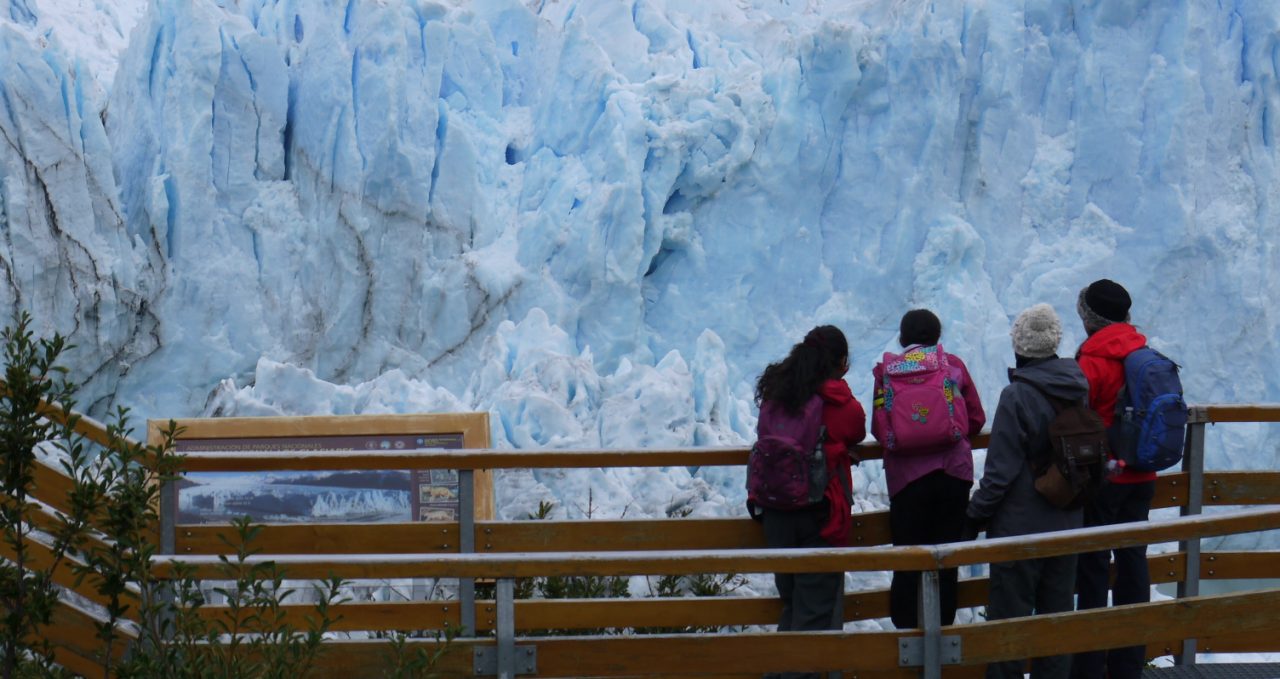
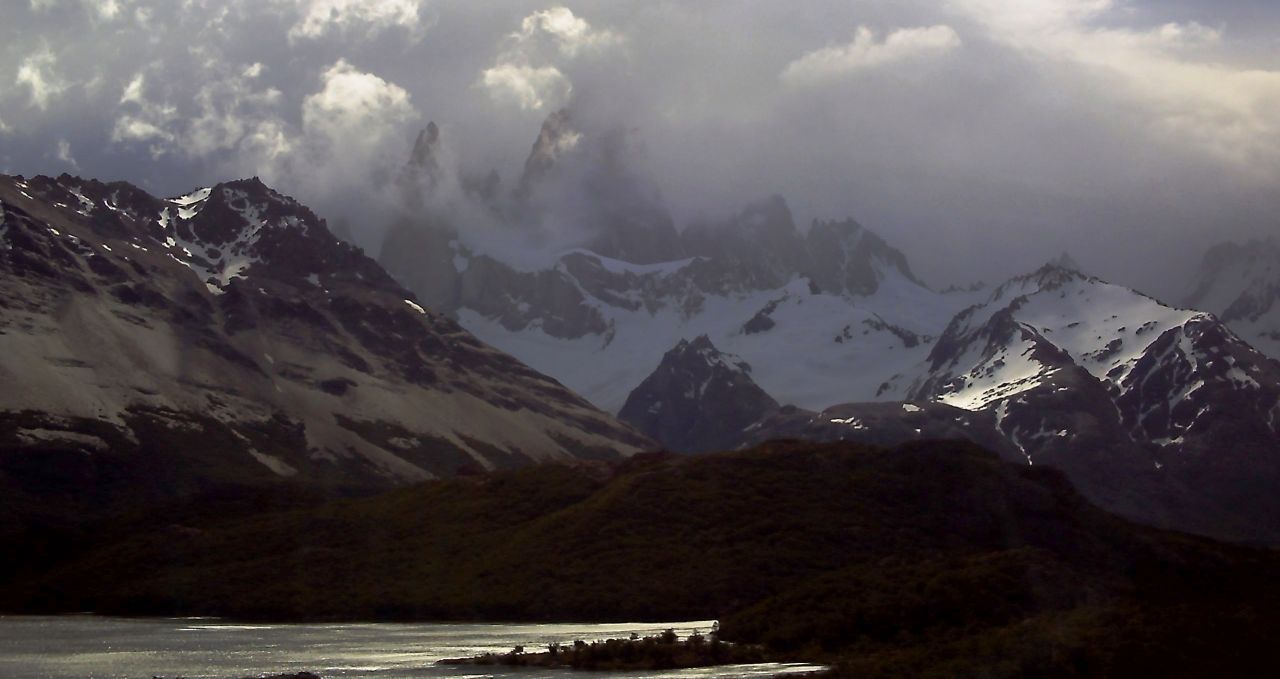
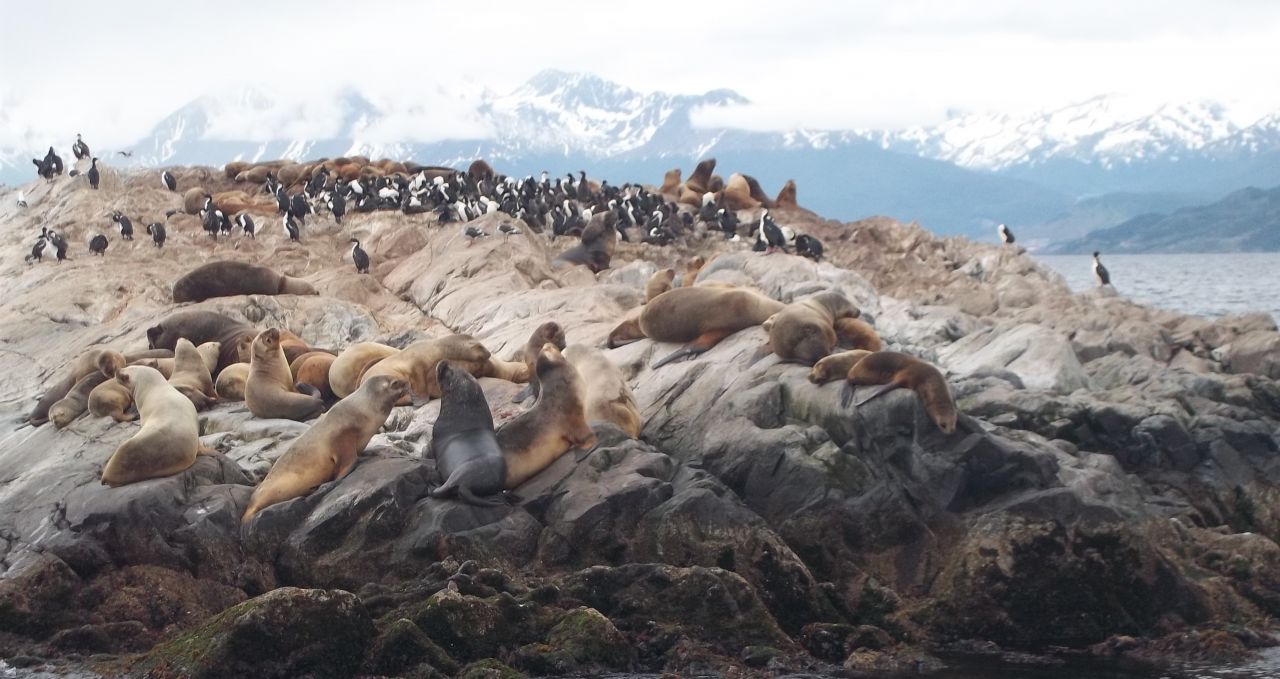
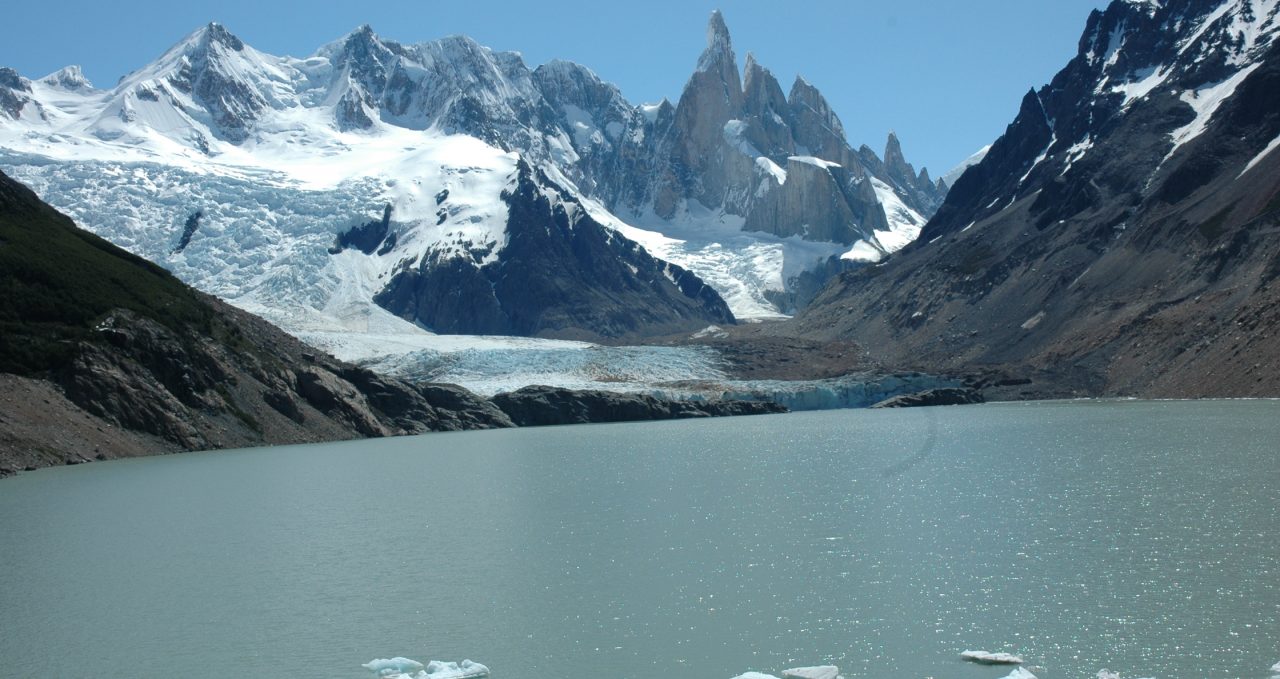
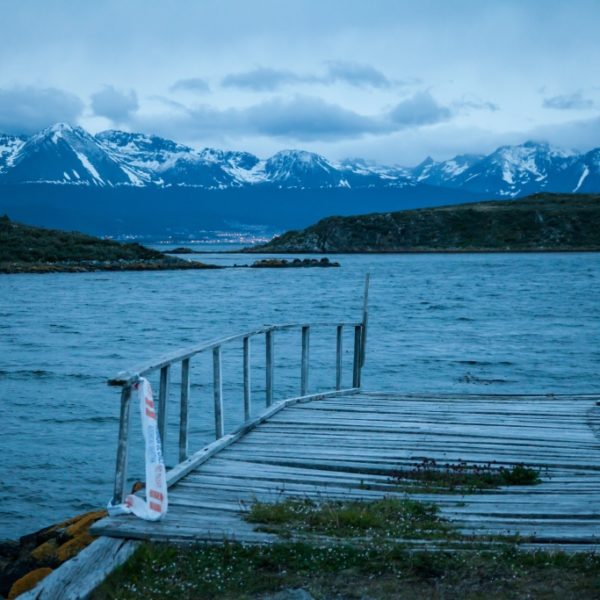
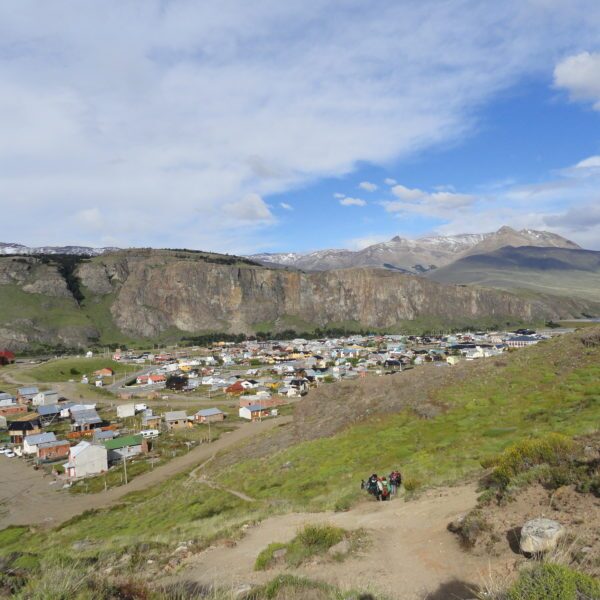

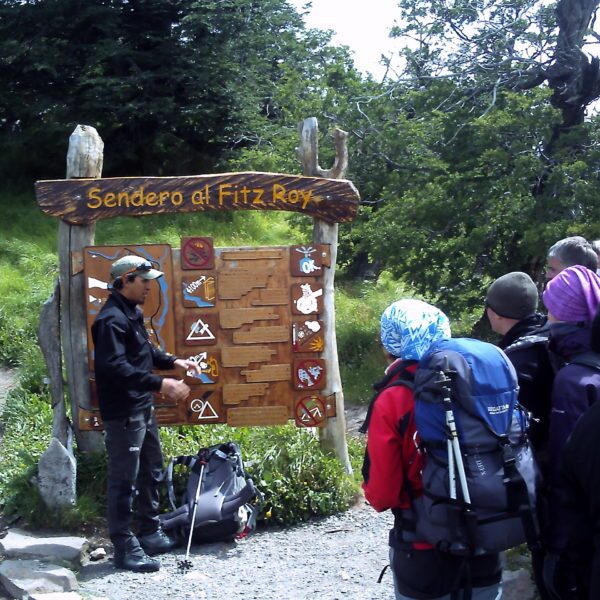
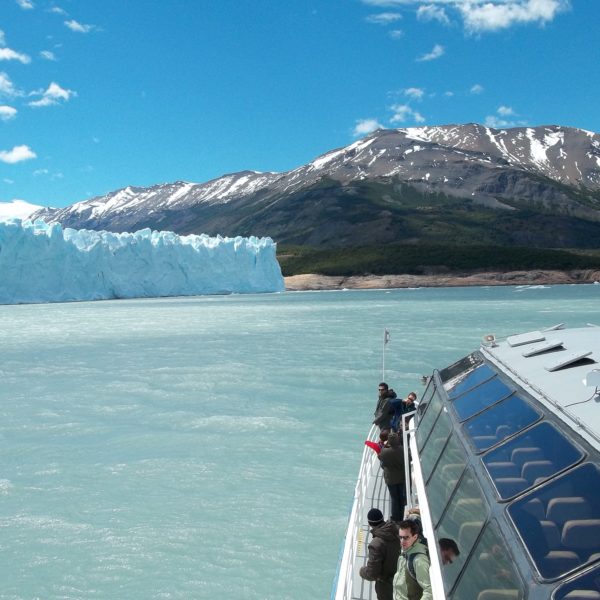
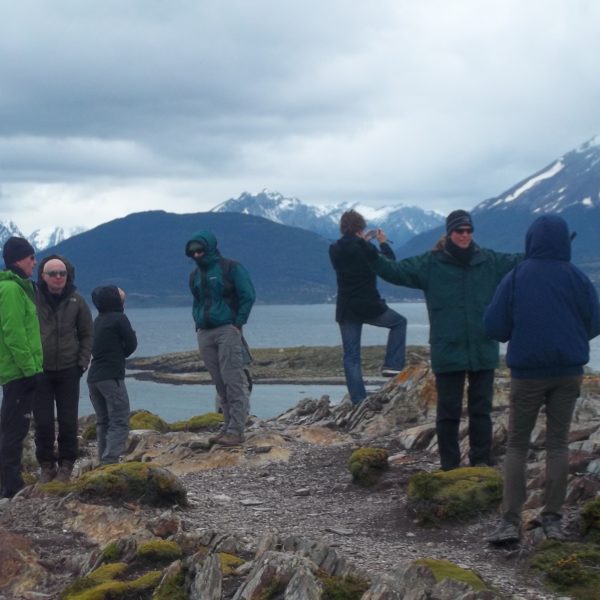
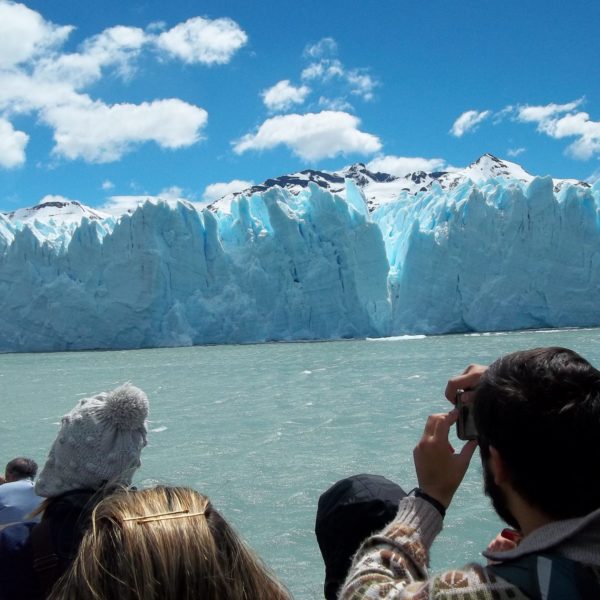
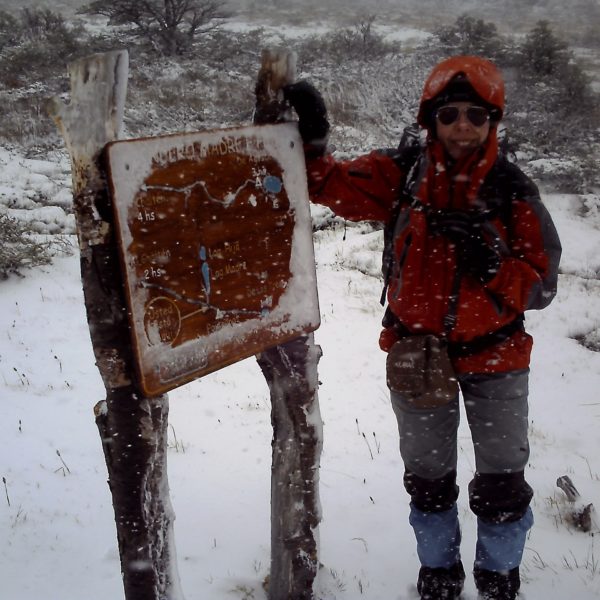
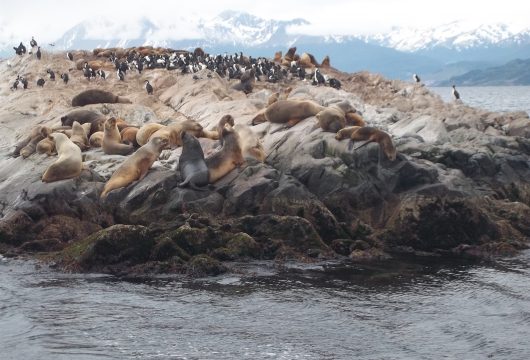

 a Group Tour
a Group Tour  a Tailor Made Tour
a Tailor Made Tour 